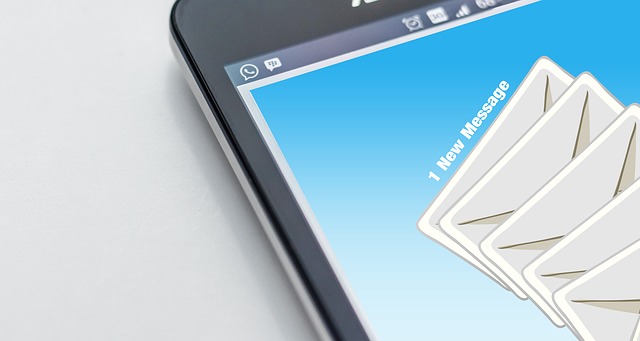
Despite what you might have heard, email marketing is far from dead. In fact, it’s so not-dead that some critics are expecting it to become even more important in 2018 with the introduction of further email features. Email marketing still draws in a huge amount of sales compared to other digital marketing strategies. Which makes a lot of sense, because email marketing gives you direct, personalized access to your audience.
That means that you can track what they are doing, how they’re reacting to your content, and whether they finally bite the bullet and convert. High-quality email campaign services such as AWS email services has meant that it’s becoming more cost-effective and easier to monitor campaign progress and ROI results than ever before.
Yet putting together an excellent email campaign can be a lot of work. Make sure that your business secures the conversions it needs by following these 6 steps.
Table of Contents
Double Opt-in
This might sound counter intuitive, but asking people to confirm that they have signed up to your newsletter is actually one of the best ways to not only ensure that your email marketing campaigns are being targeted appropriated, but also to ensure that they are reaching high-quality potential customers.
Double Opt-ins create an opportunity for those who have signed up to change their mind. This means that those who proceed are more emotionally invested in what you have to offer.
Incredible Welcome Emails
Once people have opted in for your email newsletter, you need to start working on keeping them interested in you. That means sending them welcome emails.

Make sure that your emails are personalized. This will create a great first impression and won’t relegate the email straight to ‘junk’. Next, pick content which the person who has signed up actually wants to see. That means using the data you have collected to create suitable market segments.
Another good option for maximizing conversions through email newsletters is offering a discount or deal. For instance, you may offer a discount code which can be used for free shipping or some money off of a service. You can also encourage online booking this way by saying the discount code needs to be entered at the online checkout.
Utilize Data
Make sure that you use data to split your contact list into segments. Some email newsletter services offer this option for segmentation, and the more info you can get the better. AWS Email services actually have several options for market segmentation. You can choose to limit your segment based on factors like age, location, and more.
Data should also be used to check the progress and results of campaigns. Click-through rate is one of the most important factors you should be keeping an eye on. Mostly, this can hover between 15 – 25 % if you’ve suitably segmented your market and are optimizing your content. If not, it’s time to start…
Run A/B Testing Campaigns
A/B testing is where you take one email, change it a little bit, and then send both of them to equal market segments. It’s a digital marketers weapon against stagnation and ensures that you can measure how one email compares to another whilst limiting as many extraneous factors as possible. If you’re not running A/B testing campaigns then you’re doing something wrong.
You can start by running a campaign to check the layout and format of your email. Also, try practicing with different ‘sender’ names. Sometimes, something as simple as the color of a button or the size of a piece of text can lead to large gains when it comes to conversions and click-throughs. You might not realize it, but the little things do count.
Optimize for Mobile
This one often slips under the radar, but optimizing your email content for mobile devices is becoming more and more important. Currently, 60% of emails are opened on a mobile or tablet device. That’s a large enough number that if you don’t consider that market, you’re going to lose a lot of potential customers.

Creating a mobile-optimized email newsletter is simple, you just have to reduce the amount of content to bitesize levels. That means that instead of a whole sentence for your subject line, you just want 30 – 35 characters. You’re also going to want to reduce descriptions and ensure that your call to action (CTA) is large and bold on the screen. Try to break things up so that it’s not all muddle together. There’s nothing worse than a cramped newsletter for causing viewers not to click through.
Run A/B tests to see how different formats play out against each other. Make sure that your links and CTAs are as easily accessible to the eye as they can be, and ensure that images don’t cover too much of the email.
Craft Incredible Landing Pages
Once people have clicked on your email, they’re going to be directed to your website and a landing page you have set up. Make sure that it’s not always the same.
Landing pages should be different depending on the content of the email you have sent out. For instance, if you’ve sent an email about festive options or products, you shouldn’t be directing them to your homepage. You should be making sure that they’re being taken to your festive options page, right? Or even better, a page which has been designed to specifically mimic the content of your email.
Relevancy, similarity, and appeal. These are the three buzzwords you should be following when putting together landing pages.
Keep Your Eye on the Ball
It’s easy to focus solely on the results you have from a campaign, but make sure to keep your eyes on the most important statistic you have: ROI. Calculating ROI is integral to ensuring that your email marketing campaign is actually paying off and is easily done by measuring up how much your spending with how much you’re getting back in the form of conversions.
Luckily, Amazon AWS email services have meant that sending mass emails has becoming increasingly inexpensive, so guaranteeing ROI should be easy.




Staying focused on campaigns and seeing the finish line is a big struggle for me! It’s easy to get lost in the mayhem
Quite informative!